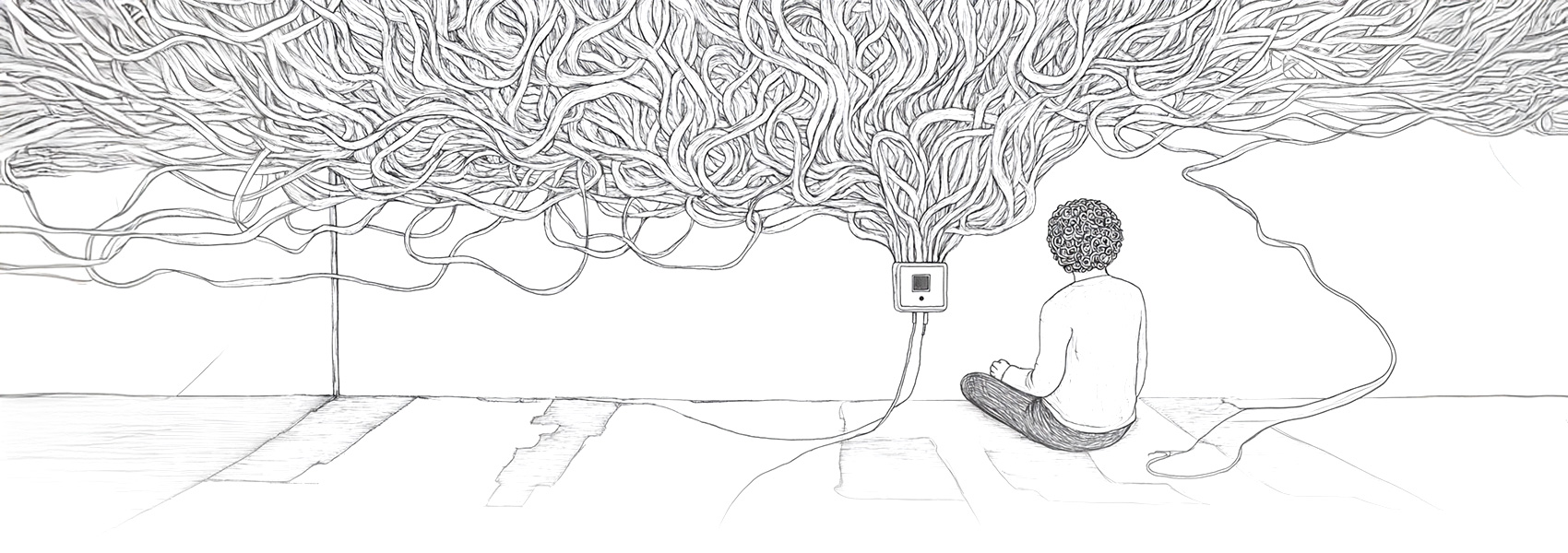
E.M. Forster’s The Machine Stops (1909) is a eerily prescient novella that envisions a future where humanity’s reliance on technology leads to spiritual and societal decay. Written over a century before the digital age, Forster’s dystopian masterpiece anticipates modern anxieties about artificial intelligence, social media isolation, and environmental collapse. Through the story of a subterranean society governed by an omnipotent Machine, Forster explores themes of human connection, autonomy, and the perils of surrendering our humanity to systems of control. A cornerstone of speculative fiction, this haunting tale remains startlingly relevant in an era dominated by screens, algorithms, and virtual existence.
The story unfolds in a futuristic society where humans live in isolated, hexagonal cells beneath the Earth’s surface. Every need—air, food, communication, even intellectual stimulation—is provided by the Machine, a global technological entity worshipped as divine. Physical contact is obsolete; inhabitants interact via glowing plates, delivering lectures or engaging in sterile debates. The protagonist, Vashti, embodies this world’s values: she is a lecturer and devout follower of the Machine’s ideology, which prioritizes efficiency, safety, and the avoidance of direct experience.
Her son, Kuno, rebels against this sterile existence. He yearns to visit the Earth’s surface, a forbidden act deemed “unmechanical” and dangerous. When Kuno secretly ventures above, he discovers a desolate landscape ravaged by environmental neglect, yet he experiences a profound connection to nature and human history. His return triggers suspicion, and the Machine places him under threat of “Homelessness”—exile to the surface, a death sentence.
Kuno’s rebellion plants seeds of doubt in Vashti, though she initially dismisses his “heresy.” However, signs of the Machine’s deterioration begin to surface: faulty air vents, malfunctioning communication systems, and unsettling rumors of its decline. The Committee of the Machine dismisses these as minor issues, but Vashti’s faith wavers after a visit to Kuno’s cell, where she experiences a rare moment of physical travel—a jarring, “vulgar” ordeal that leaves her traumatized.
As the Machine’s failures escalate, society fractures. Lectures are interrupted, art and music degrade into noise, and citizens grow increasingly paranoid. The Mending Apparatus—a repair system—becomes erratic, symbolizing the collapse of order. Forster’s prose crescendos as the Machine’s final breaths echo through the cells: “The Machine stops!”
In the apocalyptic finale, Vashti and Kuno reunite amidst the chaos. The Machine’s collapse triggers catastrophic failures: air grows toxic, lights fade, and humanity’s underground cities crumble. Kuno helps his mother to the surface, where they witness the night sky—a sight unseen for generations—and encounter a community of surface-dwelling “Homeless” who have retained their humanity. As they perish, Kuno whispers, “Humanity has learned its lesson,” hinting at hope for renewal among those who rejected the Machine.
The Machine symbolizes humanity’s Faustian bargain with technology. While it provides comfort, it extinguishes curiosity, creativity, and physicality. Forster critiques the illusion of progress, arguing that over-reliance on machines erodes empathy and critical thought. The inhabitants’ worship of the Machine mirrors modern society’s idolization of digital convenience.
Vashti’s world mirrors today’s screen-dominated culture. Interactions are mediated through plates, echoing social media’s shallow connections. Forster warns of the psychological toll of replacing physical presence with virtual substitutes: “Beware of first-hand ideas!” the Machine teaches, promoting conformity over lived experience.
The ravaged surface—a wasteland stripped of life—reflects early 20th-century industrial exploitation and foreshadows climate crisis themes. Kuno’s journey upward underscores the cost of ecological neglect, urging reconciliation with nature.
The Machine enforces dogma to suppress curiosity. “Ideas” are distrusted, and dissenters like Kuno are labeled terrorists. Forster parallels this with authoritarian censorship and the dangers of intellectual stagnation.
Written during the Edwardian era, The Machine Stops responds to rapid industrialization and the rise of mechanized warfare. Forster, a humanist, feared technology’s potential to erode moral and social fabric. His warning resonates today in debates about:
Forster’s novella is a prophetic critique of humanity’s trajectory. Its depiction of a society numbed by convenience, alienated by screens, and severed from nature feels unnervingly modern. The Machine’s collapse serves not as a nihilistic end, but a call to reclaim agency, connection, and reverence for the physical world.
By blending philosophical depth with speculative innovation, The Machine Stops challenges us to reflect on our relationship with technology—not as masters or slaves, but as mindful stewards of progress. A must-read for fans of Brave New World, 1984, and anyone questioning the cost of a digitized future.
